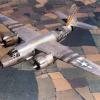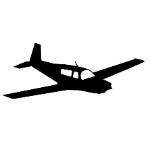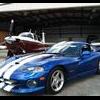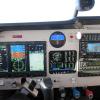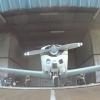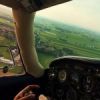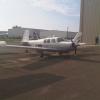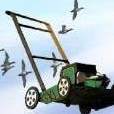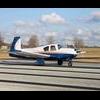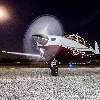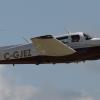Leaderboard
Popular Content
Showing content with the highest reputation on 09/05/2015 in all areas
-
From: http://www.flyingmag.com/technique/proficiency/technicalities-are-you-feeling-lucky "The U.S. rules for certifying aircraft are found in several different locations, depending on the type of airplane, but Part 23 — a subpart of Title 14, Aeronautics and Space, of the Code of Federal Regulations — is typical. Descended from the earlier CAR 3, under which some types still in use today were certified, Part 23 came into force in 1965 and governs the certification of airplanes of up to 12,500 pounds gross weight, as well as commuter aircraft of up to 19,000 pounds. (Part 25, which is similar to Part 23 in many respects, applies to transport aircraft.) Light-sport aircraft are approved under a "consensus standard" developed by the American Society for Testing and Materials, a nongovernment body of experts that designs industry standards for just about everything; the ASTM standard, like other aircraft certification standards all over the world, is largely based on Part 23. Section 335 of Part 23 defines several important speeds. The first is the design cruising speed, which, for airplanes with wing loadings of less than 20 pounds per square foot — that is, most small single-engine airplanes — must be 33 times the square root of the wing loading. For a wing loading of 16 psf, VC would be four times 33, or 132 kias. This speed is a purely formal requirement, used to provide a framework for structural and other decisions; many airplanes can't actually cruise at their "design cruising speed." But the design cruising speed provides a basis for another speed, VD, the design dive speed, which is generally 1.4 times VC; and VD is in turn the basis for VNE, the never-exceed speed, which is nine-tenths of VD. If an airplane can't achieve its design VD in flight, then the dive speed attained in flight test, VDF, replaces VD, and VNE is, again, nine-tenths of it. These speeds, among others, define various corners of the flight envelope, which in turn determine the required strength of major structural components. But absolute speed affects many aspects of a structure besides obvious things like wing spars and fuselage skins. For example, cowlings must be sufficiently stiff to not bulge or blow apart under the internal pressure of ram air, which, at 175 knots, is about 100 pounds per square foot. Canopy latches and hinges must be strong enough to resist the considerable lift developed by a curved surface at high speed. Higher speeds imply lower angles of attack, and it's even conceivable that a wing with a lot of built-in washout or twist could fail above a certain speed because the angle of attack of the outer panels becomes negative, and they begin to push downward, subjecting the lower spar cap, which is the smaller, to an excessive compression load. All of these loadings are due to air pressure, which grows in proportion to the square of the speed — double the speed produces four times the force; they are functions of the indicated airspeed, not the true. Now, VD, which is an indicated speed, is by definition a safe speed; the forces at VNE are just 81 percent of those at VD (0.9 x 0.9 = 0.81), and so there is a comfortable margin of safety, so far as structural strength is concerned, at VNE. But there is a complication that muddies the water considerably. It is flutter. Flutter is a vibration that may be augmented by aerodynamic forces. It is the one challenge to aircraft structures that does not increase gradually with speed. It is possible for a structure to perform normally right up to a certain speed and then, with a gain of two or three more knots, to explode into fragments in a split second. That is what most likely happened to the South African VL-3. The accident has not yet been investigated, but it has the earmarks of wing flutter induced by a vibrating aileron. Flutter is affected by a number of factors, one of which is the true, not the indicated, airspeed. As you will have immediately perceived, this fact raises a logical difficulty. VNE, the redline on the airspeed indicator, is an indicated airspeed, but the critical flutter speed may be a true airspeed. So the margin separating VNE from the critical flutter speed gets smaller as you gain altitude. Furthermore, if you get really high up, the difference can be larger than the margin that separates VD from VNE, simply because the difference between indicated and true airspeed is greater than 10 percent. That doesn't mean the airplane will flutter, because VD is not the critical flutter speed. Manufacturers are not required to determine the critical flutter speed for each design, but only to demonstrate that it is free of flutter up to VD and that there is good reason to believe, based on various kinds of ground tests and mathematical analyses, that it will remain so up to 1.2 times VD. It is noteworthy that the section of Part 23 regarding flutter, 23.629, makes no mention of altitude. The cumulative margin between VNE and 1.2 times VD is 33 percent, and this probably provides a good cushion in all normal operations, but if I were to ride a wave to 35,000 feet in a 172, I would not be in a hurry to peg the airspeed at redline on the way back down." So, there are many factors that go into determining V speeds, including Vne. Vne is then presented to the pilot in the airspeed limitation sections and airspeed markings in the POH (or AFM). In our Mooney, these are KIAS, and are indicated on our airspeed indicator in KIAS. As an aside, Vne is defined as "NEVER EXCEED SPEED – The speed limit that may not be exceeded at any time." This definition does not indicate how this is presented to the pilot, but in the case of our Mooney, the POH (AFM) does. Can we agree that determining Vne (from a builder's perspective) is complex and depends on a myriad of factors, but the presentation to us by Mooney is a defined redline number in IAS? Edit: One hopes our airframes have been tested at the maximum altitude the engine can take it to...6 points
-
4 points
-
Discussing bicycles and Mooney's with a few Mooniacs the other day. Here are two bikes in my Bravo. If carrying one I only pull the front wheel via quick release. Hauling two I remove the seat posts too, I belive I could get two more in there facing the other way. Handlebars are still on just covered by the towels. Not many little airplanes that can do this (and do this and also haul ass too :-) For those not familiar, the back seats go in and out in one minute. I typically fly with one or both removed.3 points
-
I am one of those [web] developers of whom you speak. I could be convinced to fix the homepage for not $ since I already live here.3 points
-
Hello all! We have successfully installed the new 4.0 version of the forum software. Some things are still working in the background to complete the migration and this might even take a couple days. Some notes: 1) We seem to have lost the home page layout. I will look into getting this restored but it might cost some $$$ to get a developer in to do it. 2) Usernames seem to now be case sensitive. I always logged in as Mooniac58 and could not login until I realized my official username was "mooniac58" in all lowercase. If you can't login - this is likely a problem. 3) I am still working on upgrading Tapatalk to work with 4.0 so this could be a day or two as well. If you see anything else please let me know. Thanks!2 points
-
I never run um dry and I don't switch on the pump but I do fixate on the pressure gauge and monitor pressure for a while.. I will never understand the wisdom of running a tank dry if you have a fuel problem on the new tank what then.2 points
-
So, after reading this, my original hypothesis is correct, "Don't go too fast" and to determine TRUE flutter speed from this theoretical discussion, Peter needs to demonstrate for us when flutter occurs by borrowing my cameras and filming a dive from 15,000'.2 points
-
One thing appears to be the same. And that is your usage of double space lines... Or are you up to triple space now?2 points
-
My dad, who last flew in 2003 in my grandpa's old M20F, came by to see what was going on. He loves the plane and is now excited to renew his medical and get back into flying. And after a late-night wash, she is tucked away in her new home. Next step? Full annual to wipe out a list of small squawks. With mine and my IA's schedule, hopefully I can have my complex endorsement by the end of the month.2 points
-
It is just me or do when you see pictures or other planes flying overhead you look at the tail first?1 point
-
IA called. We are going to annual today. I'm on my way up there right now to pull all the inspection panels and to clean the 15 years of gunk out of the belly1 point
-
KS Moniac my panel also has a Garmin AOA in the upper left corner. As far as Useful load I think that I recovered between 50-75LBS from all of the wiring and connectors that they removed as well as the old equipment that was removed. You would be suprised what they put behind the panel at the factory..Marauder you're right I guess I am looney, but this was my retirement gift to me. Now all I have to do is retire in 10Yrs...1 point
-
Read the context, the rest of the paragraph tells you why they recommend running dry. But there's far better ways to judge your endurance now.1 point
-
The POH for my '68 C also says nothing on turning on the boost pump to change tanks, and I don't really grasp the rationale for it. It would seem that fuel flow is momentarily disrupted regardless as you pass through the "off" position while fumbling with the awkwardly located selector. Having said that, I turn on the pump every time anyway and stare nervously at the small fluctuation in fuel pressure as I turn it off. Force of habit from training in a Piper. I also don't think I have the guts to risk running a tank dry - as noted above, it seems a little nutty that the POH wants you to do this deliberately - and then tells you not to let the engine lose power?! I guess this might be reasonable if you get yourself into a tight fuel situation and want to make sure you've used one tank fully while still at altitude before committing to the other one?1 point
-
that's such minute possibility as to be disregarded. The pump also has dual diaphragms and will continue to operate with one torn. The fuel pump drain line will give clue to that. These diaphragm fuel pumps usually run to TBO and beyond. Perhaps it's the most reliable accessory on the rear of the engine. I usually follow the POH unless I have a compelling reason to do otherwise. For a short or confined area takeoff, of for one where are no suitable options for a forced landing, I'll use it for takeoff. Other than that, I won't. But mooney says in case of power failure switch tanks and turn the boost pump on. Mine is the farthest right switch and is right near the throttle. Be ready to instantly turn it on in case of engine power loss The biggest reason not to use the Dukes pump is economic. It costs 1400$ to overhaul it and it is not rated for continuous duty. When we first bought the plane my wife was out practicing landings. Pump on for takeoff and landing like the book says. After an hour of this the pump seized. Dukes wanted to investigate this, so we sent them the pump. I had to buy another new pump with core charge n the interim. So it was 1000$ for the first pump, 1000$ for the second one, plus 800$ for a core charge. And I had to wait 4 weeks to get the original one I sent in overhauled, because no cores were available. So 2800$ and 4 weeks later I was flying. I simply won't use it unless I need to because of this.1 point
-
you're going to wait a long time at TEX for CD or ground to get back to you. Especially on denver center's freq.1 point
-
1 point
-
Figure out what frequency the Falcon is on for his clearance, then when there's a break on the frequency, transmit "Falcon 123XP, come up 123.0." When he does, ask him to allow you runway access for a VFR departure. I suspect the Falcon presumed you were also awaitng release.1 point
-
It works much better on my iPad but it's almost unusable in my laptop using internet explorer. No problems using chrome on my laptop. Im using version 11 IE and windows 7 update- I had set mooneyspace to be viewed in the compatibility mode for IE. Removed that setting and now all is well.1 point
-
The squeak could be coming from the friction bolt. If you remove the plastic chain cover in the cabin you will see it. I wouldn't lube it. Clean it and see if the friction pad is warn out.1 point
-
There is a small chain that goes from the wheel to the gearbox. The only real way to service the gearbox is to take it apart, clean all the parts and reassemble it with new grease. Not really that hard. To to keep from messing up the trim adjustment, run the trim to one of the stops before disconnecting the torque tube. Don't turn the torque tube by hand. When you reassemble the gearbox, run it to the same stop and reconnect the torque tube.1 point
-
1 point
-
1 point
-
I actually like it. Hopefully the Tapatalk function will come soon.1 point
-
1 point
-
I can do so on Saturday or Sunday for Gas. Let me know or PM for cell phone/email....1 point
-
Did you know the Mooney tail is quite small , many other makes have larger tails. (bait)1 point
-
I would question what the flap and rudder have to do with yellow arc and VNE. With regard to breaking the wings or tail off in decent. We fly our planes in similar fashion on powered decent. Crazy thrill seekers that we are1 point
-
This whole thread is Marauder bait, though his female pics might fit better in an airship thread.1 point
-
Fantastic news from one D/C owner to another. You'll love those high compression cylinders from the D...1 point
-
Russ, Jerry Chen, Tom Bowen and Jared Absher are scheduled to attend the Mooney Summit III in Panama City Beach October 1-4, 2015. We will ask them about that (including projected pricing), as well as an integrated ADS-B -in/-out solution for the G1000.1 point
-
Thanks for the reply. As I indicated in my reply I don't know the IFD well enough to make specific comments on the capability of the Bluetooth or WiFi for current functions. From your reply, the Bluetooth functions with the keyboard and the WiFI is coming with future apps. For some pilots that make it an appealing feature. For others it doesn't, especially if it drives the box price up. My point about the market position is from someone who has spent a decent wad of money on avionics. Although I don't like Garmin's gorilla tactics, the "a la carte" approach works. If I want FlightStream, I buy it. If I want TAWS, I buy it (but not at $6k). If your product was priced on par with the GTN series (which means you would need to strip feature, fine), I would consider it if for no other reason to give Garmin competition. And on another market opportunity. Read the threads and see how many GNS series are still selling used for $6k to $8k. You make a basic WAAS version of your product, it you will pick up business. Please don't take my comments out of context. I'm just one consumer but I am one of your target customers.1 point
-
My pet peeve will be paying for a yearly database that my tax dollars have already paid for. Every darn one of these ought to be able to take the database straight from the format that the FAA puts it out in. That should be a starting point that would allow you to fly the approaches and airways. If Jeppessen can add value to that and get us to pay for it doesn't bother me. A monopoly does.1 point
-
As for what I look at first I guess it depends I like looking closely at the prop spinners all the way to the tail. Women and planes are a lot alike looking at the tail can tell you many things about them. 1. personality 2. how they fly in different conditions 3. where they come from 4. if you would like to fly it 5. who owns them 6. when they were made 7. if they will disrupt W&B1 point
-
1 point
-
1 point
-
It would be interesting to find out how many G's it takes to break the Mooney wing. I know I hit the ground hard enough last year in a bravo to have snapped it at the fuselage. Man, that hurt. Stacey, got your ears on? any Engineering data to share? Ill ask Bob Kromer at the Mooney Summit for sure to see if he knows. mike "cementhead" elliott1 point
-
I think a wire has to be run to your avionics panel regardless to turn off/on your ELT in case it turns off on its own. This may occur anyway even if you remotely mount the ELT in the back with it's own independent GPS source. This is unverified information. I do know of a Mooney Pilot who was updating his aircraft and ran the wire in advance of having to do it later while his seats and interior were out for annual. It was a smart move as the panel is now prewired for the on/off switch, he just hasn't made the ELT purchase at this time. -Seth1 point
-
reviving a year old thread. that's a bold move cotton, lets see how it pays off1 point
-
1 point
-
Married, wife gets used halos (w/new ear bits!) I bought them from Rob... Unmarried, girlfriend gets top of the line NC headset! Kids get old DCs. ( they are confused by the fashion logo) I think I understand relationships now... Best regards, -a-1 point

